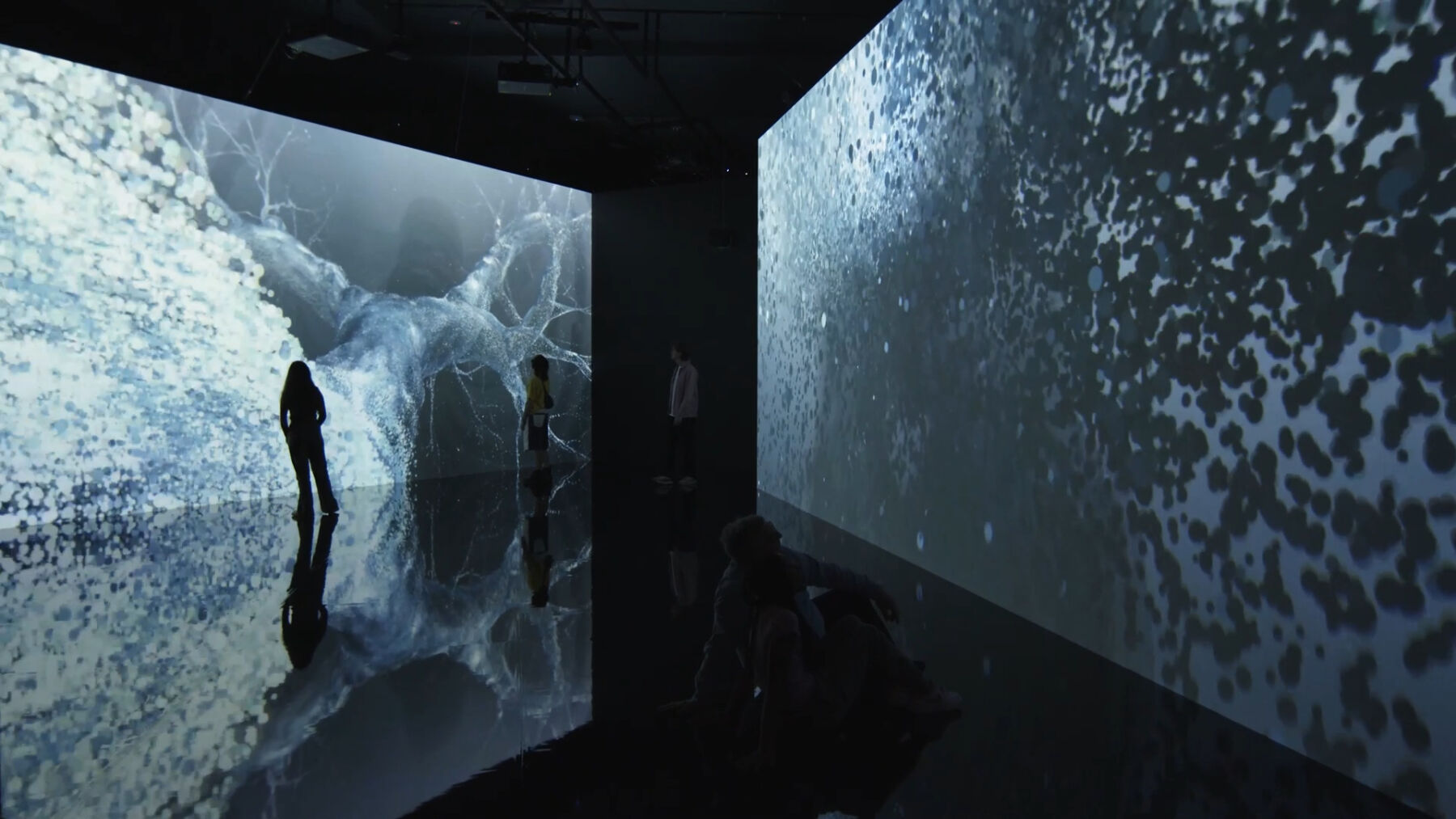Text by CLOT Magazine

Is it possible to create a biological overview effect by shifting people’s perspective on the human body’s ecosystem? The Beauty of Blood Flow is a behind-the-scenes film on the series of audio-immersive and VR installations created in collaborations between London-based artist collective Marshmallow Laser Feast and the scientists at the Fraunhofer Institute for Digital Medicine MEVIS, using medical imaging data to reveal the familiar landscape of our bodies.
With the human heart as the starting point, Marshmallow Laser Feast has utilised immersive technologies to narrate this biological journey. Marshmallow Laser Feast’s work is rooted in the transformative potential of immersive experiences.
One powerful research tool Fraunhofer MEVIS uses is the MR scanner, which delivers high-resolution 3D images from inside the human body. Matthias Günther, Deputy Institute Director of Fraunhofer MEVIS with a joint professorship on MR-Physics at the Univerity of Bremen, told us they had to rethink how they use their tools and sequences for image acquisition. This novel gaze leads to visualisations from within the body. It allows total immersion into the human body, enabling an entirely different perspective as a kind of onsite observer.
The collaboration has opened new ways of seeing and experiencing the human body, enabling a broader audience to engage with developments in digital medicine through sci-art installations. Immersive art-sci installations allow audiences to explore topics such as the human body and novel technologies to examine it, changing the view from which we scientists perceive and address phenomena of the human body; Günther shared about this collaboration.
For the first project, The Tides Within Us, screens are used as windows into the world beyond the limits of our senses, allowing audiences to peer beneath the skin, looking beneath our notions of age, race, and gender to reveal universal human truths. EVOLVER, the second one, is a collective virtual reality experience which drops audiences deep inside the landscape of the body, following the flow of oxygen through our branching ecosystem to a single ‘breathing’ cell. The datasets provided by the scientists were vital to the artwork’s development.

Barney Steel, founder and director of Marshmallow Laser Feast, reflects on his first project development steps. Taking David Abram’s Becoming Animal: An Earthly Cosmology as inspiration, he recalls What is a tree? Does the boundary of its bark separate it from me? Where do I end and begin? I feel like I am contained within my skin, inside, looking out at other beings neatly packaged within their skins. If we could see the flow of oxygen and carbon dioxide in the air, we would see that everything flows into everything else, that I and a tree are not separated by skin and bark. Still, we are more like rivers, constantly ebbing and flowing, an ancient dance relationship.
To bring these thoughts to life, Marshmallow Laser Feast have built a complete digital cardiovascular system model and ran particle simulations through it, branching out into the rest of the human body. In EVOLVER, it becomes clear that breath sparks life and connects us to the natural world through the respiration cycle. The project pushes the frontiers of media art and science engagement and allows audiences to rediscover the human body as a landscape regardless of gender, age, and race. The project shows how fascinating the human body is and how well it works when everything flows. People will realise how important it is to keep everything running.
Despite significant advances in recent years, representing fluids in a digital environment has been a big challenge for designers. Günther told us they use accurate medical image data of human bodies as a starting point for their sci-art works at Fraunhofer MEVIS. For the aspired aims of Marshmallow Laser Feast, we needed to push the boundaries and acquire and provide as much information on the structure of and blood flow in the vessels that the artists could take with artistic tools to a novel level of detail for their final artwork. Thus, our challenge was to acquire as much information as possible to reconstruct realistically looking visualisations. This is not usually the aim in clinical routine where diagnosing diseases is the ultimate goal. However, the result proves us right to go this extra mile.
Matthias Günther and Barney Steel also share their main reflections after working on this project. For Steel, this collaboration and the resulting artwork allow audiences to journey through the beating heart, back eddies, and whirlpools of flow engulfing them. It is like meeting a pen pal for the first time after a lifetime of love letters. Experiencing the familiar in ways never seen before is where art and science meet most profoundly.
Meanwhile, Günther concludes that, for him, the human body is a well-tuned system, which is fascinating to observe. What I enjoyed in this project is the capability of modern medical imaging equipment, which allows us to look into the human body without harming it.





